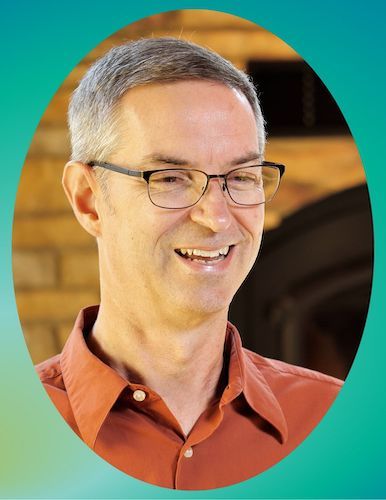
Whole & Holy - Sugar shock: My wake-up call around added sugars

After more than a few embarrassing moments in the early afternoon as a family physician in the exam room, I decided that something needed to change. What was causing me to nod off while talking with patients? I was generally active, in relatively decent shape. I thought I was getting enough sleep at night. Why did this happen after lunch?
I was practicing medicine in the days when pharmaceutical representatives could provide lunch and share the benefits of their products. There were good restaurants in our area that featured pizza and pasta, and cola was a favorite beverage of providers and staff. In the busyness of life, including these types of lunches, I was not intentional about my nutrition. When I learned that added sugars were responsible for these moments of dozing off, I also realized I had gained some unwanted weight. I was experiencing too much of a good thing.
Sugars in our diet can be naturally occurring or added. Naturally occurring sugars are found in foods such as fruit (fructose and glucose) and milk (lactose). Added sugars are sugars put into foods during preparation or processing, or at the table.

Many people consume more sugar than they realize. Our bodies don’t need sugar to function properly. Added sugars contribute zero nutritional benefit and add many calories that can lead to overweight or obesity.
Added sugar can be addictive. The four components of addiction are binging, withdrawal, craving, and cross-sensitization with other products. I was binging in the sense that I was developing a tolerance for added sugar and requiring an increased amount to make me feel satisfied. Added sugar affects the brain chemical dopamine and opioid receptors that provide a sense of pleasure, but when those sugars begin to leave the body, it creates a feeling of fogginess. In addition, too much sugar inhibits another chemical responsible for making new memories and dulls the mechanism to stop eating. Excess sugar gets turned into fat.
How much sugar is too much? Recommendations for a healthy diet allow 15% of calories to come from fats and added sugars, and 7% to 10% of daily calories can come from added sugar. This is approximately equivalent to 25 grams (roughly six teaspoons) for women and 36 grams (roughly 9 teaspoons) for men.

Back in the time of our great-great-grandparents, the average person consumed about 5 pounds of added sugar per year. When I was in third grade, the average was 25 pounds. It is now over 100 pounds per year! With the advent of processed foods, the food industry discovered carbs are cheap. We are out of balance.
So, what can we do about it? Be aware. When I was trying to combat my afternoon tiredness, I reflected on the pattern of my eating habits. The rhythm of when I eat, where I eat, and the pattern of what I eat makes a difference in how I show up daily. My brain and heart feel better for the work I’ve done, with God’s help, through my wife, friends, and primary care provider. Feeling better is the goal.f
If my story resonates with you, I invite you to reflect, ask for support, and take advantage of available resources for more education.
My advice based on my own takeaways from my health journey:
1. Consider how you want to feel. When I discovered that added sugar contributed to feeling poorly, I searched for alternatives.
2. Replace sugary beverages (or consume them sparingly). I found a good water bottle to keep close at hand during the day for hydration.
3. Purchase healthy fruits instead of sugary snacks. Raisins and other dried fruits and nuts are my go-to for between-meal snacks.
4. No need to entirely cut out unhealthy foods, but enjoy them sparingly and with mindfulness. I still love chocolate, and when I consume it, I keep in mind that dark chocolate is a better choice.

Dr. Shawn Culey
Related resources:
· Improve Your Brain Health with a New Brain Care Score
· The bitter truth about added sugar
· Top sources of added sugar diagram
· 85% of calories from nutrient-dense foods diagram
Dr. Shawn Culey is a family physician working in urgent care in the Allina Health system in the Minneapolis area. From Sioux Falls, South Dakota, he provides leadership for the Dakotas Conference’s Higher Ground program for clergy.